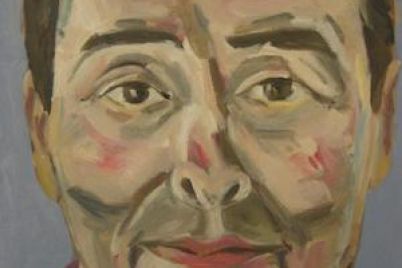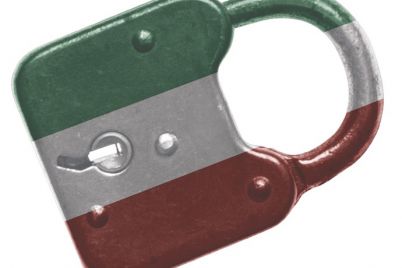Leonardo da Vinci was a heretic, or at the very least he did not hold the Catholic Church, its dogma and its leaders in very high regard. His disapproval of the Church is cleverly and meticulously disguised in what is arguably his greatest painting, The Last Supper. This is the premise of The Secret Supper (New York: Simon & Shuster, 2006. 329 pp.), a novel by Javier Sierra set in Renaissance Milan, with Leonardo himself as the central figure. Originally published in Spain, the novel was a best seller throughout the Spanish-speaking world. Of late, it is almost impossible to mention Leonardo Da Vinci and not conjure up images of Dan Brown’s The Da Vinci Code. One is naturally led to wonder if Sierra is not trying to cash in by jumping on the Da Vinci bandwagon. As Sierra recounts it, he began to research his book before Brown’s The Da Vinci Code was published. The Secret Supper stands on its own, its similarities to Brown’s blockbuster merely cursory and altogether coincidental. In fact, the only significant common element is the way in which the two books overtly challenge some of Christianity’s long-held beliefs – assertions that easily got a person excommunicated, if not worse, in another era, but which today put Church groups on the defensive. So far, there appears to have been no reaction to Sierra’s book from those quarters, but it may be just a matter of time.
As historical novels go, The Secret Supper is more akin to Umberto Eco’s The Name of the Rose, a comparison that the author was eager to foster in our recent conversation. Like Umberto Eco’s novel, the story of The Secret Supper is narrated by an aging monk living in seclusion many years after the events; and like Eco, the events he relates are shocking: monks have been murdered and a super sleuth has been dispatched by the pope to unravel the mystery.
The year is 1497. Leonardo is putting the finishing touches on his Last Supper, commissioned by the rather uncatholic Ludovico Sforza, Duke of Milan, to adorn the refectory wall of the Dominican monastery of Santa Maria delle Grazie. During his inquiry (perhaps inquisition is a better word) into the murders, the pope’s envoy Brother Agostino, stumbles upon an even greater conspiracy, which threatens not just the monastery, but the very supremacy of the Catholic Church.
The evidence all seems to point to Leonardo Da Vinci. But would the great artist, the genius of his age, resort to murder? The Last Supper, in fact, does not adhere to accepted standards. Christ and the Apostles do not have halos, and there is no meat on the table, as one would expect. Peter is holding a dagger, and he appears to be threatening John, who is sitting next to Jesus and, in fact, looks like a woman. Why is Judas not cast in a dark light as the traitor? And is that Leonardo himself in the painting who, with two apostles, is turning his back to Jesus?
Intermingling historical facts and figures with fictionalized characters and events, Sierra narrates a thoroughly enjoyable murder mystery, and in the process presents a plausible explanation of the secret messages encoded in the symbolism of Da Vinci’s Last Supper. His attention to detail in describing locations, personal habits, and daily life in the fifteenth century demonstrate his rigorous research of the subject. “Porta Romana was the city’s most elegant quarter. Crossed day and night by the most splendid carriages in Lombardy, it boasted of being the only monumental entrance into Milan. Its porticos were always crowded with well-attired gentlefolk, and the ladies enjoyed wandering under them in order to feel the city’s daily pulse. Papal nuncios, foreign ambassadors and noblemen of every kind let themselves be seen there, hoping to be admired. It stood next to the city’s main canal and was an unparalleled gallery of the vanities.” A romance involving two minor characters, though a little forced, provides a welcome diversion and keeps the exposition from becoming too didactic.
The narrative as well as the dialogue (mediated by a very capable translator) are deliberate and credible. The author masterfully conveys the awe of seeing Leonardo’s painting for the first time. Brother Agostino writes: “…I could barely make out what my eyes were seeing. … The feeble light … allowed me to perceive something that froze me to the spot. Indeed: beyond the barrier of boxes and cartons, in between the spaces left by the great wood scaffolding that crossed the wall from one side to the other, another room could be seen! It took me a moment to understand that this was an illusion. But what an illusion! Sitting at a rectangular banquet table…, thirteen human figures with life-like attitudes and gestures seemed to be acting out some theatrical work for our eyes only! They were the most realistic and moving portraits I had ever seen of Our Lord Jesus Christ and His disciples.”
A minor technical flaw in the structure is the recounting of events from which the narrator was absent. But this hasn’t stopped offers from Hollywood. In fact, the story is tailor-made for a screenplay adaptation. “We are considering two movie offers at the moment,” the author told me. “My wish is that this book be transformed into a movie like The Name of the Rose,” he says candidly.
Javier Sierra’s The Secret Supper is a must read for history and mystery buffs in general and art history aficionados in particular.


